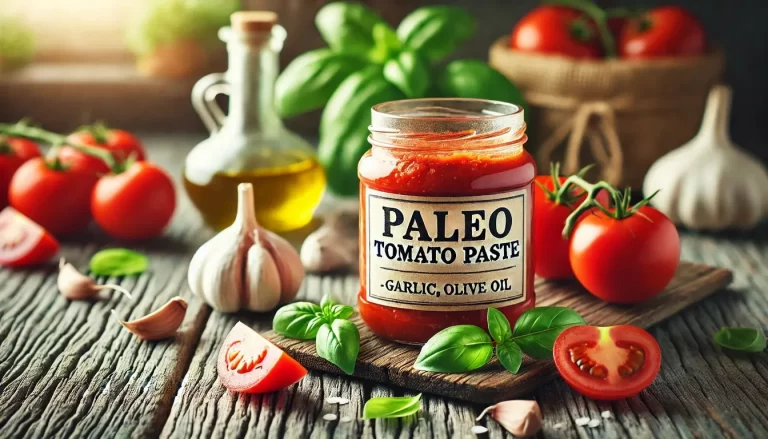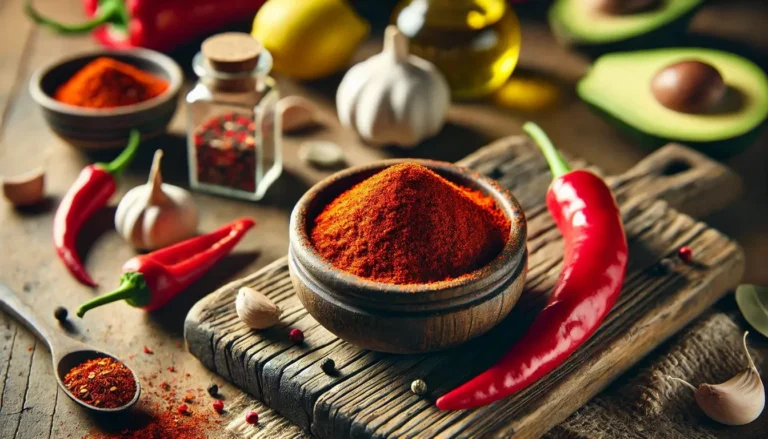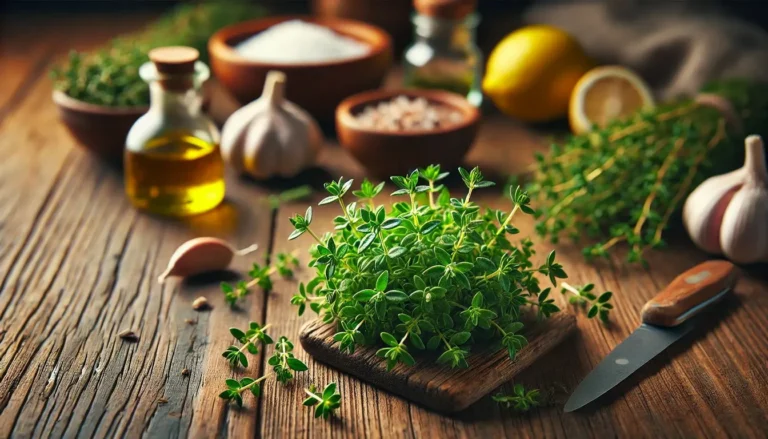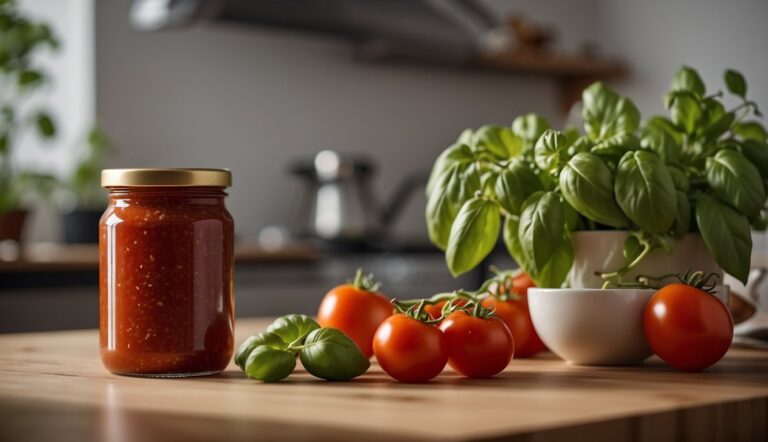The Paleo diet, often referred to as the caveman diet, emphasizes eating whole, unprocessed foods that our ancestors might have consumed. One of the challenges of following a Paleo diet is finding ways to add flavor to meals without relying on processed sauces and condiments. Enter Paleo tomato sauce: a versatile, flavorful addition to your culinary repertoire that adheres to Paleo principles. In this article, we’ll delve into the details of making Paleo tomato sauce, its benefits, and how to use it creatively in your meals.
Understanding Paleo Diet Principles
The Paleo diet focuses on consuming foods that are as close to their natural state as possible. This means prioritizing fresh vegetables, fruits, nuts, seeds, lean meats, and fish, while avoiding grains, legumes, dairy, and processed foods. The idea is to mimic the eating habits of our hunter-gatherer ancestors, promoting a diet rich in nutrients and free from modern additives.
Sauces are essential for adding flavor to meals, but many store-bought options contain non-Paleo ingredients like sugar, preservatives, and thickeners. Creating your own Paleo-friendly sauces ensures that you know exactly what goes into your food, keeping it clean and nutritious.
The Basics of Tomato Sauce
Traditional tomato sauce often includes tomatoes, garlic, onions, olive oil, herbs, and spices. However, many store-bought versions also contain additives and preservatives. When making Paleo tomato sauce, the goal is to stick to simple, whole ingredients, enhancing the natural flavors of the tomatoes and herbs.
Ingredients for Paleo Tomato Sauce
A great Paleo tomato sauce starts with fresh, high-quality ingredients. Here’s a list of essential components for a robust and delicious sauce:
- Fresh tomatoes: Choose ripe, juicy tomatoes for the best flavor. If fresh tomatoes aren’t available, use canned tomatoes with no added preservatives.
- Garlic: Adds depth and a rich, savory taste.
- Onion: Provides a sweet, aromatic base.
- Olive oil or avocado oil: Healthy fats that enhance the sauce’s texture and flavor.
- Fresh herbs: Basil, oregano, and thyme are classic choices.
- Sea salt and black pepper: Essential for seasoning.
Optional additions for extra flavor:
- Carrots: Adds natural sweetness and balances acidity.
- Bell peppers: Adds a sweet, earthy flavor.
- Mushrooms: Adds umami richness.
Step-by-Step Recipe for Paleo Tomato Sauce
Here’s a detailed recipe to guide you through making your own Paleo tomato sauce:
Ingredients:
- 2 pounds fresh tomatoes (or two 14-ounce cans of whole tomatoes)
- 4 cloves garlic, minced
- 1 medium onion, finely chopped
- 2 tablespoons olive oil or avocado oil
- 1 medium carrot, finely grated (optional)
- 1 bell pepper, finely chopped (optional)
- 1 cup mushrooms, sliced (optional)
- 1 tablespoon fresh basil, chopped (or 1 teaspoon dried basil)
- 1 tablespoon fresh oregano, chopped (or 1 teaspoon dried oregano)
- 1 teaspoon fresh thyme (or ½ teaspoon dried thyme)
- Sea salt and black pepper to taste
Instructions:
- Prepare the tomatoes: If using fresh tomatoes, blanch them in boiling water for 1-2 minutes until the skins start to peel. Transfer to an ice bath, then peel, core, and chop. If using canned tomatoes, simply crush them with your hands or a spoon.
- Sauté the aromatics: Heat the olive oil or avocado oil in a large saucepan over medium heat. Add the onion and sauté until translucent, about 5 minutes. Add the garlic and cook for another minute.
- Add optional vegetables: If using carrots, bell peppers, or mushrooms, add them now and sauté for another 5 minutes until they start to soften.
- Combine tomatoes and herbs: Add the tomatoes to the pan, along with the basil, oregano, thyme, salt, and pepper. Stir to combine.
- Simmer: Reduce the heat to low and let the sauce simmer for at least 30 minutes, stirring occasionally. The longer it simmers, the more the flavors will meld together.
- Blend (optional): For a smoother sauce, use an immersion blender or transfer the sauce to a blender and process until smooth.
- Adjust seasoning: Taste the sauce and adjust the seasoning as needed.
Tips for the Perfect Paleo Tomato Sauce
- Choosing the right tomatoes: Fresh, ripe tomatoes are ideal, but canned tomatoes with no added preservatives are a convenient alternative.
- Blending vs. leaving chunky: Decide based on your preference. Blending creates a smooth sauce, while leaving it chunky gives a rustic texture.
- Storing and preserving: Refrigerate in an airtight container for up to a week, or freeze in portions for up to three months.
Versatile Uses of Paleo Tomato Sauce
Paleo tomato sauce is incredibly versatile and can be used in various dishes. Here are some ideas:
- Zucchini noodles (zoodles): Toss the sauce with spiralized zucchini for a light, pasta-like dish.
- Spaghetti squash: Roast spaghetti squash and top with the sauce for a hearty meal.
- Grilled meats and vegetables: Use the sauce as a topping or marinade for grilled chicken, beef, or vegetables.
- Paleo pizza base: Spread the sauce on a Paleo-friendly pizza crust and top with your favorite toppings.
- Stuffed peppers: Mix the sauce with ground meat and vegetables, then stuff into bell peppers and bake.
- Shakshuka: Simmer eggs in the sauce for a delicious breakfast or brunch.
Nutritional Benefits of Homemade Paleo Tomato Sauce
- Tomatoes: Rich in vitamins A and C, potassium, and antioxidants like lycopene, which has been linked to reduced risk of heart disease and cancer.
- Garlic and onions: Contain compounds with anti-inflammatory and immune-boosting properties.
- Fresh herbs: Basil, oregano, and thyme are rich in antioxidants and have anti-inflammatory benefits.
- Healthy fats: Olive oil and avocado oil provide monounsaturated fats, which are beneficial for heart health.
Common Mistakes to Avoid
- Overcooking the sauce: Cooking too long can make the sauce too thick and lose its fresh flavor.
- Using non-Paleo ingredients: Avoid adding sugar, preservatives, or non-Paleo thickeners.
- Ignoring portion sizes: Even healthy sauces should be consumed in moderation.
Making your own Paleo tomato sauce is a simple and rewarding way to enhance your meals while adhering to Paleo principles. By using fresh, whole ingredients, you can create a flavorful sauce that’s free from additives and preservatives. Experiment with different herbs and vegetables to make the sauce your own, and enjoy the nutritional benefits that come with homemade, clean eating.
We’d love to hear about your own variations of Paleo tomato sauce! Share your recipes and tips in the comments below. For more Paleo recipes and healthy eating tips, subscribe to our newsletter and stay connected with our latest posts.
FAQ Section
Q: Can I use dried herbs instead of fresh ones? A: Yes, dried herbs can be used as a substitute. Generally, you can use one-third the amount of dried herbs as fresh ones.
Q: How long does homemade Paleo tomato sauce last in the fridge? A: The sauce can be stored in an airtight container in the refrigerator for up to one week.
Q: Can I freeze Paleo tomato sauce? A: Yes, you can freeze the sauce in portions for up to three months. Just thaw it in the refrigerator before reheating.
Q: What can I use instead of tomatoes if I have a tomato allergy? A: You can try using roasted red peppers or a combination of carrots and beets to create a similar sauce base.
Q: Is it necessary to peel the tomatoes? A: Peeling the tomatoes is recommended for a smoother sauce, but if you prefer a chunkier texture, you can leave the skins on.
Q: Can I add meat to the Paleo tomato sauce? A: Absolutely! Adding ground beef, turkey, or sausage can make the sauce heartier and add more protein.
Q: What if my sauce is too acidic? A: Adding a small amount of grated carrot can help balance the acidity with natural sweetness. Avoid adding sugar, as it’s not Paleo-friendly.










